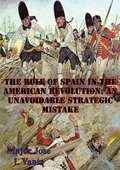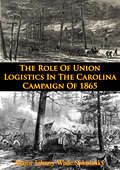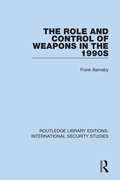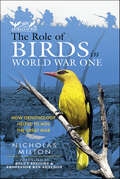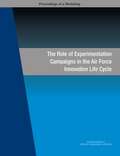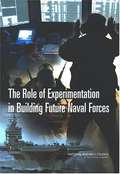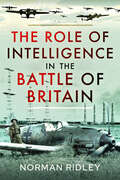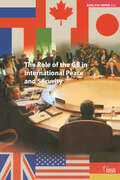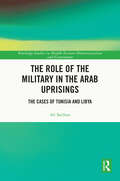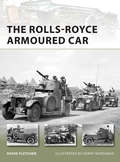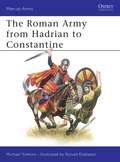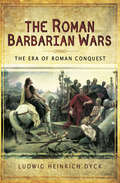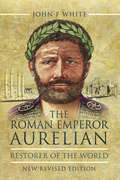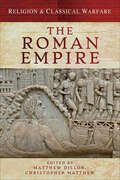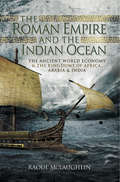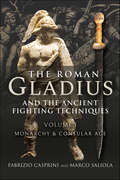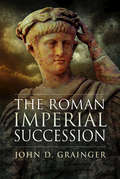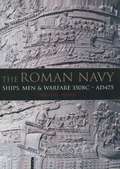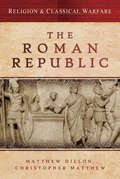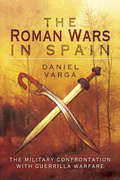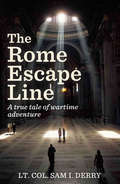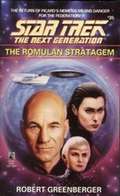- Table View
- List View
The Role Of Spain In The American Revolution: An Unavoidable Strategic Mistake
by Major Jose I. YanizSpain played a significant role in the outcome of the American Revolution by providing economic support and opening war fronts to fight the British in Europe and North America. Spain's support for the revolutionaries was a strategic mistake for its government, for it was not in Spain's national interests as a colonial power to do this.Neither France nor Spain helped the North American colonies to gain independence from Great Britain for altruistic reasons. Instead, both countries were eager to retaliate against Great Britain, which had become the undisputed global power after these countries' defeat in the Seven Years War...However, Spain, unlike France, still possessed extended and rich territories throughout the two American continents. This caused Spain to cautiously approach involvement in the American Revolution. Being a colonial power like Britain, Spain did not want the seed of independence to spread throughout its own colonies; therefore the country never officially recognized U.S. independence during the time of the American Revolution. Instead, and as a result of the Bourbon Family Compact with France, Spain declared war on Great Britain in 1779, but it would never fight within the Thirteen Colonies.Nevertheless, and despite the inherent risk, Spanish ports were opened to American ships, and Spain provided, initially by secret means through Paris and New Orleans and later on in a more straight way, financial support to the American cause in the form of money and supplies since 1776. Spanish money also financed expeditions such as De Grasse's Fleet in 1781 and the Washington's army on its march to the south that were decisive in the Yorktown victory. Moreover, Spain fought the British in the Spanish areas of interest, including West Florida, Central America, the Caribbean, and Europe, thereby opening several fronts which the British could not simultaneously manage, and threatening vital sea lines of communications of the global naval power.
The Role Of Union Cavalry During The Atlanta Campaign
by Major Robert Blake LeachThis study is a historical analysis of the effectiveness of Union cavalry during the Atlanta Campaign of the American Civil War. In a campaign noted for the highly skilled maneuver conducted by General William Tecumseh Sherman, the effective employment of the cavalry was essential. The Union cavalry had the missions of providing security to the flanks of the army and protecting the supply lines by guarding the railroad and by striking against the Confederate cavalry. Later in the campaign, the Union leadership introduced the task of destroying Confederate railroads as a cavalry mission. The Union cavalry failed to perform these missions adequately.First, this work investigates the tradition of the Union cavalry and the state of Sherman's cavalry at the beginning of the campaign. Secondly, an analysis of the cavalry operations breaks the use of cavalry into three phases and focuses on the various missions which were attempted. Finally, the study addresses the lessons learned and what the applicability is for modern operations.This study concludes that although the Union cavalry was well manned and well equipped, improper employment and deficient senior leadership caused it to play an unsuccessful and detrimental part in the overall campaign.
The Role Of Union Logistics In The Carolina Campaign Of 1865
by Major Johnny Wade SokoloskyThis thesis investigates the role Union logistics played during the American Civil War and examines the effectiveness of logistics support in Sherman's Carolina Campaign.Discussion begins with an overview of Union logistic operations in the war focusing on the logistics functions of supply, transportation, and combat health support. Next it proceeds to examine the role of logistics during the campaign by first discussing the impact logistics operations had on General Sherman's preparations prior to initiating the campaign. It then further discusses logistics operations carried out during the conduct of the campaign in the Carolinas. Finally, it examines logistics operations in the Carolina Campaign in terms of today's logistics doctrine.Logistics played a critical role in the success of the campaign. The logisticians in support of Sherman's Army overcame difficulties at the strategic, operational, and tactical levels to provide effective support. There were significant problems with the support concept, especially in the areas of casualty evacuation and uniform resupply. This thesis investigates these problems as well as the logistics successes that helped make Sherman's Carolina Campaign the triumphant it is remembered as.
The Role and Control of Weapons in the 1990s (Routledge Library Editions: International Security Studies #17)
by Frank BarnabyThis book, first published in 1992, examines defence issues as the twentieth century drew to a close. With the end of the Cold War, many of the threats to European security, such as the threat of nuclear war, disappeared. New ones, however, were emerging. The rise of nationalism, the spread of weapons of mass destruction to politically unstable countries, the increase in world population, the debt crisis – all these contributed to security problems that needed to be resolved. The book assesses the possibilities for future European defence and the role that the United States would play in it: will it be prepared to stay in Europe under European leadership, or must it dominate? It also considers the capabilities offered by new military technology and the need for control of weapons of mass destruction.
The Role of Birds in World War One: How Ornithology Helped to Win the Great War (Animals at War)
by Nicholas MiltonThe British Expeditionary Force sent to France in the late summer of 1914 has been referred to as ‘The Best British Army Ever Sent to War’ as it was one of the most highly trained and disciplined forces in the world. It was also the ‘Best Birdwatching Army Ever Sent to War’ for among its ranks were hundreds of both amateur and professional ornithologists. When not fighting many soldiers turned to birdwatching as a way of wiling away the long hours spent on guard duty or watching over ‘no man's land’. As a result, the hobby ranked as one of the most popular past-times for soldiers at the front, on a par with smoking, writing, games, gambling, sport and shooting rats. The list of birds seen by soldiers serving in all the theatres of war was truly impressive ranging from the common like sparrows, skylarks and swallows to the exotic like golden orioles, hoopoes and bee-eaters. It was not just at the battle front that birds found themselves in the firing line but also on the home front. Birds provided inspiration for politicians, poets and painters who carried on despite the terrible conflict raging all around them. For the Foreign Secretary Edward Grey, who worked tirelessly to preserve peace but ended up convincing the House of Commons to go to war, birds were his hinterland. But as well as declaring war on Germany on 4 August 1914 the government also declared war on the humble house sparrow, farmers falsely accusing it of destroying Britain’s dwindling wheat and oat supplies. When the guns finally fell silent on the 11 November 1918 and the Great War came to an ignoble end, a generation of birdwatchers lay dead. Among them were scientists, researchers, lords, librarians, artists, authors, professors, poets, lawyers, surgeons and explorers, many barely having entered manhood. If they had lived the science of ornithology and the hobby of birdwatching would have undoubtedly been much the richer. A selection of them is included in the Ornithological Roll of honor at the back of this book.
The Role of Experimentation Campaigns in the Air Force Innovation Life Cycle
by Engineering Medicine National Academies of SciencesThe Air Force (USAF) has continuously sought to improve the speed with which it develops new capabilities to accomplish its various missions in air, space, and cyberspace. Historically, innovation has been a key part of USAF strategy, and operating within an adversary’s OODA loop (observe, orient, decide, act) is part of Air Force DNA. This includes the ability to deploy technological innovations faster than do our adversaries. The Air Force faces adversaries with the potential to operate within the USAF’s OODA loop, and some of these adversaries are already deploying innovations faster than the USAF. The Role of Experimentation Campaigns in the Air Force Innovation Life Cycle examines the current state of innovation and experimentation in the Air Force and best practices in innovation and experimentation in industry and other government agencies. This report also explores organizational changes needed to eliminate the barriers that deter innovation and experimentation and makes recommendations for the successful implementation of robust innovation and experimentation by the Air Force.
The Role of Experimentation Campaigns in the Air Force Innovation Life Cycle: Proceedings of a Workshop
by Engineering Medicine National Academies of SciencesThe Workshop on the Role of Experimentation Campaigns in the Innovation Cycle was held in January 2016 to define and assess the current use of experimentation campaigns within the Air Force, evaluate barriers to their use, and make recommendations to increase their use. Participants at the workshop presented a broad range of issues, experiences, and insights related to experimentation, experimentation campaigns, and innovation. This publication summarizes the presentations and discussions from the workshop.
The Role of Experimentation in Building Future Naval Forces
by Committee for the Role of Experimentation in Building Future Naval ForcesThe Department of Defense is in the process of transforming the nation’s armed forces to meet the military challenges of the 21st century. Currently, the opportunity exists to carry out experiments at individual and joint service levels to facilitate this transformation. Experimentation, which involves a spectrum of activities including analyses, war games, modeling and simulation, small focused experiments, and large field events among other things, provides the means to enhance naval and joint force development. To assist the Navy in this effort, the Chief of Naval Operations (CNO) asked the National Research Council (NRC) to conduct a study to examine the role of experimentation in building future naval forces to operate in the joint environment. The NRC formed the Committee for the Role of Experimentation in Building Future Naval Forces to perform the study.
The Role of Intelligence in the Battle of Britain
by Norman RidleyThe Battle of Britain was fought between two airborne military elites and was a classic example of pure attack against pure defence. Though it was essentially a ‘war of attrition’, it was an engagement in which the gathering, assessment and reaction to intelligence played a significant role on both sides. In some respects, both the RAF and the Luftwaffe were hamstrung in their endeavours during the Battle of Britain by poor intelligence. The most egregious Luftwaffe blunder was its failure to appreciate the true nature of Fighter Command’s operational systems and consequently it made fundamental strategic errors when evaluating its plans to degrade them. This was compounded by the Luftwaffe’s Intelligence chief, Major Josef ‘Beppo’ Schmid, whose consistent underestimation of Fighter Command’s capabilities had a huge negative impact upon Reichsmarschall Göring’s decision-making at all stages of the conflict. Both the Luftwaffe and the RAF lacked detailed information about each other’s war production capacity. While the Luftwaffe did have the benefit of pre-war aerial surveillance data it had been unable to update it significantly since the declaration of war in September 1939. Fighter Command did have an distinct advantage through its radar surveillance systems, but this was, in the early stages of the conflict at least, less than totally reliable and it was often difficult to interpret the data coming through due to the inexperience of many of its operators. Another promising source of intelligence was the interception of Luftwaffe communications. It is clear that the Luftwaffe was unable to use intelligence as a ‘force multiplier’, by concentrating resources effectively, and actually fell into a negative spiral where poor intelligence acted as a ‘force diluter’, thus wasting resources in strategically questionable areas. The British, despite being essentially unable to predict enemy intentions, did have the means, however imperfect, to respond quickly and effectively to each new strategic initiative rolled out by the Luftwaffe. The result of three years intensive research, in this book the author analyses the way in which both the British and German Intelligence services played a part in the Battle of Britain, thereby attempting to throw light on an aspect of the battle that has been hitherto underexposed to scrutiny.
The Role of the G8 in International Peace and Security (Adelphi series)
by Risto PenttiläThis Adelphi Paper is the first concise yet comprehensive analysis of the role of the G8 in international peace and security. It argues that the G7/8 has a long and impressive history in the field of international security. The G7/8 has, for example, spearheaded the introduction of "low politics" and "soft security" to the top table of great power diplomacy and integrated Japan and, later Russia, into the realm of Western security discussions. In questions of war and peace the G8 does not command the legitimacy of the UN Security Council but, for the international community, is a more acceptable vehicle than unilateral action. As such the G8 can be seen as a note-worthy "second best" option after the UN Security Council. This Paper further argues that China should be admitted into the G8 first as an observer and later as a member. There is also a strong argument for the European Union to have one seat at the G8 even if such a change does not seem realistic today. The G8 bears great resemblance to the 19th century Concert of Europe. Whether it will assume a similar role in the 21st century depends in the final analysis on whether the United States welcomes such a role for the G8.
The Role of the Military in the Arab Uprisings: The Cases of Tunisia and Libya (Routledge Studies in Middle Eastern Democratization and Government)
by Ali SarihanFocused on the 2010-2011 Arab Uprisings, this book examines the role of the military in Tunisia and Libya, arguing that both armies contributed decisively to the outcome and form of the respective uprisings. The book begins by contextualizing the uprisings, with both countries plagued by anti-democratic politics and unequal social and economic structures in the 2000s. Alongside this, the book explores the key actors and factors leading up to, during, and after the uprisings. Employing a comparative case study methodology and drawing from approaches in rational choice theory and institutionalism, the author argues that the tripartite configuration of energy capacity, military structure, and strength of protest led to dichotomous outcomes in the countries. Tunisia, where the military defected, was marked by a lack of energy wealth, apolitical military structure, and high level of protest, enabling a nonviolent transfer of power. In contrast, in Libya, where parts of the military remained loyal to Gaddafi’s regime, protests evolved into violent civil conflict. Making use of expert and elite interviews obtained from fieldwork in Tunisia, as well as data from the research field, the book will appeal to specialists and students interested in international politics, military and security studies, and the MENA region.
The Rolls-Royce Armoured Car
by Henry Morshead David FletcherThe first Rolls-Royce armoured car was a privately owned vehicle fitted with a machine-gun and a limited amount of armour plate at a dockyard in France. It was used by a squadron of the Royal Naval Air Service in Flanders in 1914. Backed by First Lord of the Admiralty, Winston Churchill more and better versions followed until, by 1915 there were about 100 of them which were then handed over to the Army. "They searched the world for War" as Sir Albert Stern said of them and before long there were Rolls-Royce armoured cars operating as far apart as German South West Africa, the Western Desert, Gallipoli, all over the Middle East and the north west frontier of India.All of them used the classic 40/50hp Silver Ghost chassis. They were fast, silent and reliable but above all strong. "A Rolls in the desert is above rubies" said Lawrence of Arabia and the Duke of Westminster would have agreed with him following his famous raid to rescue the kidnapped crew of the steamship HMS Tara. At least one car accompanied the adventurous MP Oliver Locker-Lampson on his adventures in Russia.After the war, unable to find a better model the War Office simply copied the original Admiralty design with minor improvements. If that was not enough the Royal Air Force also acquired some to support their operations in the Middle East. A new design with a larger body and dome shaped turret also appeared for service in India. They also served in Ireland and even, briefly in Shanghai.The 11th Hussars still had Rolls-Royces in Egypt when the war against Italy began and the youngest of these was over fifteen years old when they went into action, but after that their numbers dwindled as newer vehicles came along. But then history repeated itself. Britain was threatened with invasion and a new army of veterans was raised to assist with defence. Some battalions built home made armoured cars, on private chassis and at least three of these were based on Rolls-Royces.
The Roman Army from Hadrian to Constantine
by Michael Simkins Ronald EmbletonThe year of 122 was the first time a Roman Emperor had set foot in the Province of Britannia since the invasion in AD 43. No doubt he had read many reports concerning the damage caused by marauding tribesmen crossing from what is now Scotland into the Province. Hadrian, therefore, decided - in the words of his biographer - 'to build a wall to separate the Romans from the Barbarians'. This engaging work from author Michael Simkins explores in depth the organisation, equipment, weapons and armour of the Roman Army from Hadrian to Constantine, one of the most exciting periods in Roman history.
The Roman Barbarian Wars: The Era of Roman Conquest
by Ludwig Heinrich Dyck&“A great book that summarizes pieces of Roman military history that are often not mentioned or difficult to find sources for . . . an entertaining read.&”—War History Online As Rome grew from a small city state to the mightiest empire of the west, her dominion was contested not only by the civilizations of the Mediterranean, but also by the &“barbarians&”—the tribal peoples of Europe. The Celtic, the Spanish-Iberian and the Germanic tribes lacked the pomp and grandeur of Rome, but they were fiercely proud of their freedom and gave birth to some of Rome&’s greatest adversaries. Romans and barbarians, iron legions and wild tribesmen clashed in dramatic battles on whose fate hinged the existence of entire peoples and, at times, the future of Rome. Far from reducing the legions and tribes to names and numbers, The Roman Barbarian Wars: The Era of Roman Conquest reveals how they fought and how they lived and what their world was like. Through his exhaustive research and lively text, Ludwig H. Dyck immerses the reader into the epic world of the Roman barbarian wars. &“I was reminded, as I picked up this superb book, of that magnificent scene from Gladiator when they unleashed hell on the Barbarian hordes at the beginning of the film. Dyck has produced a book that celebrates the brilliance of the Roman commanders and of Rome itself from its foundation to its eventual demise.&”—Books Monthly &“Dyck&’s details of ancient battles and the people involved provide as much sword-slashing excitement as any fictional account.&”—Kirkus Reviews &“His vivid prose makes for a gripping read.&”—Military Heritage
The Roman Emperor Aurelian: Restorer of the World
by John F. WhiteThe leader who helped keep the Dark Ages at bay: &“An excellent picture of the Crisis of the Third Century and the life and work of Aurelian&” (StrategyPage). The ancient Sibylline prophecies had foretold that the Roman Empire would last for one thousand years. As the time for the expected dissolution approached in the middle of the third century AD, the empire was lapsing into chaos, with seemingly interminable civil wars over the imperial succession. The western empire had seceded under a rebel emperor, and the eastern empire was controlled by another usurper. Barbarians took advantage of the anarchy to kill and plunder all over the provinces. Yet within the space of just five years, the general, and later emperor, Aurelian had expelled all the barbarians from within the Roman frontiers, reunited the entire empire, and inaugurated major reforms of the currency, pagan religion, and civil administration. His accomplishments have been hailed by classical scholars as those of a superman, yet Aurelian himself remains little known to a wider audience. His achievements enabled the Roman Empire to survive for another two centuries, ensuring a lasting legacy of Roman civilization for the successor European states. Without Aurelian, the Dark Ages would probably have lasted centuries longer.
The Roman Empire (Religion & Classical Warfare)
by Matthew Dillon & Christopher MatthewReligion was integral to the conduct of war in the ancient world and the Romans were certainly no exception. No campaign was undertaken, no battle risked, without first making sacrifice to propitiate the appropriate gods (such as Mars, god of War) or consulting oracles and omens to divine their plans. Yet the link between war and religion is an area that has been regularly overlooked by modern scholars examining the conflicts of these times. This volume addresses that omission by drawing together the work of experts from across the globe. The chapters have been carefully structured by the editors so that this wide array of scholarship combines to give a coherent, comprehensive study of the role of religion in the wars of the Roman Empire. Aspects considered in depth include: the Imperial cults and legionary loyalty; the army and religious/regional disputes; Trajan and religion; Constantine and Christianity; omens and portents; funerary cults and practices; the cult of Mithras; the Imperial sacramentum; religion & Imperial military medicine.
The Roman Empire and the Indian Ocean: The Ancient World Economy and the Kingdoms of Africa, Arabia and India
by Raoul McLaughlinThe ancient evidence suggests that international commerce supplied Roman government with up to a third of the revenues that sustained their empire. In ancient times large fleets of Roman merchant ships set sail from Egypt on voyages across the Indian Ocean. They sailed from Roman ports on the Red Sea to distant kingdoms on the east coast of Africa and the seaboard off southern Arabia. Many continued their voyages across the ocean to trade with the rich kingdoms of ancient India. Freighters from the Roman Empire left with bullion and returned with cargo holds filled with valuable trade goods, including exotic African products, Arabian incense and eastern spices. This book examines Roman commerce with Indian kingdoms from the Indus region to the Tamil lands. It investigates contacts between the Roman Empire and powerful African kingdoms, including the Nilotic regime that ruled Meroe and the rising Axumite Realm. Further chapters explore Roman dealings with the Arab kingdoms of south Arabia, including the Saba-Himyarites and the Hadramaut Regime, which sent caravans along the incense trail to the ancient rock-carved city of Petra.The Roman Empire and the Indian Ocean is the first book to bring these subjects together in a single comprehensive study that reveals Rome's impact on the ancient world and explains how international trade funded the Legions that maintained imperial rule. It offers a new international perspective on the Roman Empire and its legacy for modern society.
The Roman Gladius and the Ancient Fighting Techniques: Volume I, Monarchy and Consular Age
by Fabrizio Casprini Marco SaliolaThe backbone of the Roman army was the infantry, armed with a javelin, or pilum, and sword, or gladius. This study investigates not just the weapon itself, and its design and manufacture, but how the sword was originally conceived and how it was employed on the battlefield as an expression of the Roman state. The authors start examining the early swords employed across the Italian Peninsula during the Bronze Age and how these evolved into the gladius, which itself changed in the period of Monarchy with the introduction of the cross-hilt. During Rome’s Consular period, the gladius changed again, and, over time, both the length of the blade and its width were altered. Relying exclusively on historical and archaeological evidence, The Roman Gladius and the Ancient Fighting Techniques shows how the Roman army developed into a highly disciplined body and how fundamental the gladius was to its method of fighting. It also shows how the combat techniques of the Romans evolved as did those of their enemies. The training methods and tactics of the Roman infantry are fully explored and its performance at some of the great battles of the monarchical and consular periods are examined as the area under Roman rule fluctuated with victory or defeat. For the Roman people, the gladius was the object that better than any other showed their identity, since it was a weapon that accompanied the history of the Roman people from its earliest days, changing in shape and design as it was adapted to the varying social, political and military needs. The Roman Gladius and the Ancient Fighting Techniques is the most comprehensive study of this hugely important weapon, which also provides the reader with a complete overview of Roman society, which in this first volume is treated until the end of the Consular period. The book is richly illustrated throughout with drawings and photographs of original weapons and equipment.
The Roman Imperial Succession (Roman Imperial Biographies Ser.)
by John D. GraingerAn investigation of how a man could become a Roman emperor, and the failure to create an enduring, consistent system for selecting the next emperor. John D. Grainger analyses the Roman imperial succession, demonstrating that the empire organized by Augustus was fundamentally flawed in the method it used to find emperors. Augustus’s system was a mixture of heredity, senatorial, and military influences, and these were generally antagonistic. Consequently, the Empire went through a series of crises, in which the succession to a previous, usually dead, emperor was the main issue. The infamous “Year of the Four Emperors,” AD 69, is only the most famous of these crises, which often involved bouts of bloody and destructive civil war, assassinations and purges. These were followed by a period, usually relatively short, in which the victor in the “crisis” established a new system, juggling the three basic elements identified by Augustus, but which was as fragile and short lived as its predecessor; these “consequences” of each crisis are discussed. The lucid and erudite text is supported by over 22 genealogical tables and 100 images illustrating the Emperors.Praise of The Roman Imperial Succession“For a general introduction to the question of how one becomes a Roman emperor, Grainger has provided a sound guide.” —Bryn Mawr Classical Review
The Roman Navy: Ships, Men and Warfare 350 BC–AD 475
by Michael PitassiThe Roman Navy was remarkable for its size, reach and longevity. As significant as the Royal Navy was to the British Empire in the nineteenth century, the Roman Navy was crucial to the extraordinary expansion of Imperial power and for its maintenance over a period of more than 800 years. The fabric and organisation of this maritime force is at the core of this new book.At the height of its power the Roman Navy was, at least in numerical terms, the largest maritime force ever to have existed. It employed tens of thousands of sailors and maintained and fought fleets of ships larger than any forces since. In these pages the author looks at all the aspects of the Navy in turn. Shipbuilding, rigs and fittings, and shipboard weaponry are covered as are all the principal ship from the earliest types to the very last. The command structure is outlined, as are all aspects of the crews lives, their recruitment, terms of service, training and uniforms. Life onboard, food and drink, discipline, religion and superstition are described, while seamanship and navigation are dealt with along with bases and shore establishments. Operations feature prominently, the allied and enemy navies compared, and specimen battles employed to explain fighting tactics.All these aspects changed and developed hugely over the great span of the Roman empire but this fascinating book brings this complex story together in one brilliant volume.
The Roman Republic
by Isaac AsimovThe story of Rome from its founding (753 B.C.) to the rule of Octavian in 29 B.C.
The Roman Republic (Religion & Classical Warfare)
by Christopher Matthew Matthew DillonEssays exploring the role religion played in ancient Roman warfare, including destroying enemies’ gods, wartime ceremonies, and live burials.Religion was integral to the conduct of war in the ancient world and the Romans were certainly no exception. No campaign was undertaken, no battle risked, without first making sacrifice to propitiate the appropriate gods (such as Mars, god of War) or consulting oracles and omens to divine their plans. Yet the link between war and religion is an area that has been regularly overlooked by modern scholars examining the conflicts of these times. This volume addresses that omission by drawing together the work of experts from across the globe. The chapters have been carefully structured by the editors so that this wide array of scholarship combines to give a coherent, comprehensive study of the role of religion in the wars of the Roman Republic.Aspects considered in depth will include: declarations of war; evocation and taking gods away from enemies; dedications and ceremonies; the cult of the legionary eagle; the role of women in Republican warfare; omens and divination; live burials of people in times of military crisis; and the rituals of the Roman triumph.PraiseReligion & Classical Warfare: The Roman Republic“The authors take a novel approach in looking at military history of the Roman Republic in terms of the relationship between warriors and religion. The ancient world was driven to a high degree by religious belief, even to the point of commanders relying on seers to advise them on the eve of battle.—Very Highly Recommended.” —Firetrench “A work of meticulous and detailed scholarship.” —Midwest Book Review
The Roman Wars in Spain: The Military Confrontation with Guerrilla Warfare
by Daniel VargaIt took the Romans almost exactly 200 years to conquer the Iberian Peninsula (modern Spain and Portugal). The skillful and tenacious resistance of the various inhabitants, utilizing superior mobility in the rugged terrain to wage a guerrilla war, made the region the graveyard of many a Roman army. But the lessons, though painful, were eventually learnt and the heat of this socalled fiery war forged the legions into a more effective force. Daniel Varga analyzes the strategies and tactics of both sides, drawing on the traditional literary sources but also the latest archaeological research. He examines the problems faced by the Roman army and the extent to which it was forced to adapt to meet, and eventually overcome, these challenges. His findings show the Spanish armies as more sophisticated than often thought. The author concludes that the Spanish campaigns exerted a powerful influence on the organization, tactics and equipment of the Roman army, helping to make it the supreme fighting machine it became.
The Rome Escape Line
by Sam DerryThe Rome Escape Line, first published in 1960, is the firsthand World War II account of British Army officer Sam Derry, who, himself an escaped prisoner-of-war, remained in Rome to help other escaped POWs remain in hiding or to safely flee Italy altogether. With the help of Right Rev. Monsignor Hugh O'Flaherty, an official in the Vatican's Holy Office, Derry is given the assignment of overseeing the escape operation, obtaining money, papers, food, and lodging for the escapees. Unfortunately, there were traitors and leaks to deal with, and the German response following round-ups of captured POWs was often brutal. Overall, The Rome Escape Line provides valuable insight into a remarkable operation, reported in a humble, matter-of-fact manner by a true war-hero.
The Romulan Stratagem (Star Trek: The Next Generation #35)
by Robert GreenbergerOn a mission to an unexplored planet near the Klingon/Romulan border, the U.S.S. Enterprise travels to the planet Eloh to negotiate Federation memebership. But upon arrival, Captain Jean-Luc Picard and his diplomatic team find themselves face to face with Commander Sela, an old Romulan enemy -- who's there to convince the Elohsians to join the Romulan Empire. When a series of fatal indidents casts suspicion on both delegations, Data must form an uneasy alliance with Sela to prove the innocence of the Starship Enterprise crew -- or lose a sprategic stronghold to the Federation's greatest enemy.
